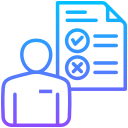
Soft Skills Assessment Methods for Employees
Today’s chosen theme: Soft Skills Assessment Methods for Employees. Explore practical, human-centered ways to evaluate communication, collaboration, adaptability, and leadership, turning fair assessment into meaningful growth. Join the conversation, share your experiences, and subscribe for more real-world insights.
Why Soft Skills Assessment Matters Now
Companies that assess soft skills with care see faster project cycles, fewer conflicts, and higher client satisfaction. Behind every metric is a relationship improved by clearer expectations, respectful dialogue, and practical support for everyday interactions.
Why Soft Skills Assessment Matters Now
When a newly promoted manager struggled with delegation, a simple assessment plus targeted feedback changed everything. Within two months, the team’s backlog dropped, morale rose, and the manager felt confident leading stand-ups and tough one-on-ones.
Defining Competencies and Building Fair Rubrics
List the behaviors that matter most in your context: active listening, conflict navigation, inclusive facilitation, and stakeholder alignment. Keep the dictionary dynamic, revisiting definitions as work patterns, markets, and team structures continue evolving.


Defining Competencies and Building Fair Rubrics
Replace vague labels like “strong communicator” with behaviorally anchored statements. For each level, describe tangible actions—clarifies expectations, summarizes decisions, invites dissent—so raters align and employees understand what better actually looks like.
A Multi-Method Toolkit for Reliable Measurement
360-Degree Feedback Done Right
Invite balanced input from peers, reports, and managers with clear prompts tied to observable behaviors. Provide guidance for constructive comments, protect anonymity where appropriate, and synthesize patterns instead of cherry-picking compelling outliers.
Structured Behavioral Interviews
Ask candidates or employees to walk through real past situations using a consistent format: situation, task, action, result, reflection. Train interviewers, use standardized probes, and score against a rubric to enhance fairness and reliability.
Situational Judgment Tests (SJTs)
Present realistic scenarios with several plausible responses and ask participants to rank or choose the best actions. Focus on context-rich dilemmas that mirror your work, then validate results against on-the-job performance over time.
Observations in the Flow of Work
Micro-Feedback Loops
Encourage short, timely notes after key interactions: a difficult stakeholder call or a design critique. Over time, these micro-moments reveal trends, helping people course-correct quickly without waiting for formal review cycles.
Retrospectives With Behavioral Focus
Add soft skills prompts to retros: Where did we listen well? Where did handoffs break? Document behaviors, not personalities, then convert insights into one small commitment per person for the next sprint.
Calibration Sessions for Consistency
Bring managers together quarterly to review sample feedback against rubrics. Discuss tough calls, align on standards, and capture guidance so future assessments are more equitable and easier to explain to employees.
Simulations, Role-Plays, and Realistic Practice
Design Scenarios That Feel Real
Base scenarios on genuine challenges: conflicting priorities, misaligned stakeholders, or a missed deadline. Give sparse but credible context to invite inquiry, then observe how participants clarify ambiguity, negotiate, and set next steps.


Scoring and Inter-Rater Reliability
Use behavior checklists tied to your competency model, and train multiple raters. Run mini-calibration rounds, compare notes, and refine anchors to improve reliability before scaling the simulation across the organization.
Mitigating Bias Thoughtfully
Diversify raters, anonymize comments where feasible, and monitor score distributions by group. Train assessors on common biases, then review patterns regularly to catch drift and make data-informed improvements to your process.
Privacy, Consent, and Data Minimalism
Collect only what you need, store it securely, and set clear retention timelines. Offer opt-ins for experimental methods, and provide employees access to their data and the right to challenge inaccuracies respectfully.
Communicate the Why and the How
Before launching, explain goals, methods, and safeguards in plain language. Invite questions, hold office hours, and share example reports so employees feel informed, respected, and ready to participate constructively.
From Assessment to Growth and Measurable Impact
Use a strengths-first approach, then co-create one or two behavior goals with clear practice opportunities. Schedule a follow-up check-in and celebrate small wins to maintain momentum beyond the initial assessment meeting.


From Assessment to Growth and Measurable Impact
Map behaviors to resources: shadowing, mentoring, stretch projects, and targeted micro-courses. Encourage social learning through peer circles where people rehearse difficult conversations and exchange real feedback in a supportive environment.
